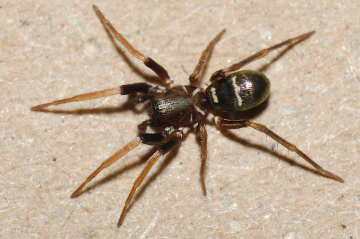Summary for Micaria micans (Araneae)
previous species | next species
National Distribution
Terms of Use. Double-click on map to go to region

Explore Regional Distribution
Please log on and add a note on this species
About this species
Recorded altitude range0m to 85m
Species text
DistributionMicaria micans was originally described by Blackwall in 1858 (as Drassus micans) but was later synonymised with M. pulicaria. A recent study based on material from Europe and N. America using both molecular and morphological methods has demonstrated that the two species are indeed distinct (Muster & Michalik, 2020). In Britain this species has currently been recorded widely from southern Britain as far north as North Wales. However, more critical study is needed on material from the northern half of Britain before its full range can be determined. In Europe it is widespread although apparently absent from the Iberian Peninsula and parts of central Europe.
Habitat and ecology
Currently our knowledge of the habitat preference of this species in Britain is limited. In Kent it has been found to be associated with open habitats such as grasslands, coastal shingle, sand dunes and post-industrial sites whereas M. pulicaria was more frequently found in woodlands. In Wales M. micans is also associated with open, thermophilic habitats such as sand dunes, shingle and short calcareous grassland. Here M. pulicaria is not restricted to woodland habitats but is found amongst denser vegetation in moorland, lowland raised bogs, coastal grassland and dense marram grass on dunes. Adults are most active between April and June but with some specimens still found up to September.
Status
Until more is known about the distribution and ecology of this species, it would be premature to assign a status. However, its widespread distribution and varied range of habitats do not suggest any immediate threats.
Adult Season
Habitats
background methodology
Recorded management for locations with Micaria micans
Recorded substrate and hydrology for locations with Micaria micans
Images
please log on and upload a new image for this speciesSee also A-Z Species Index - A-Z Picture Index - previous species | next species

